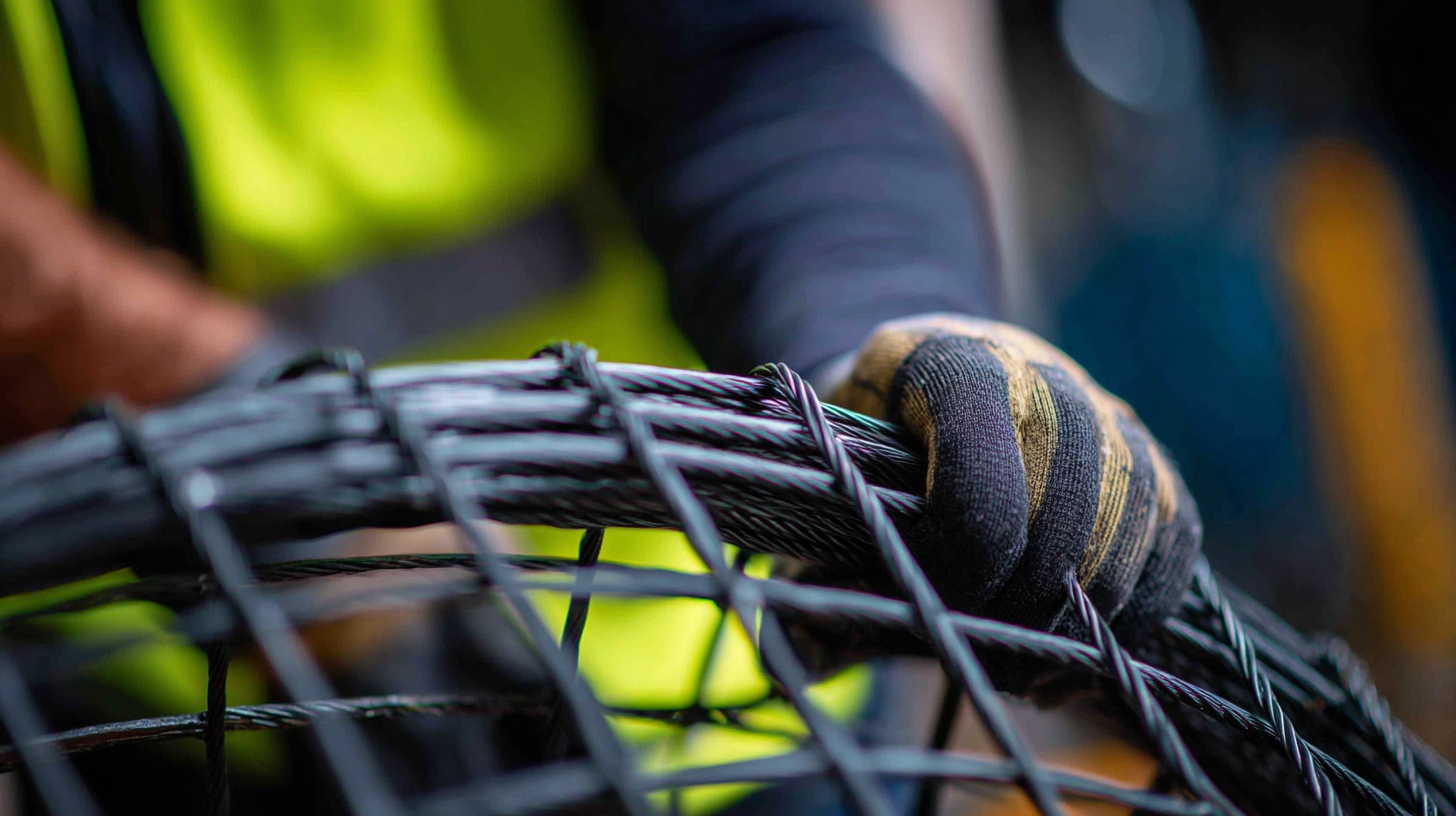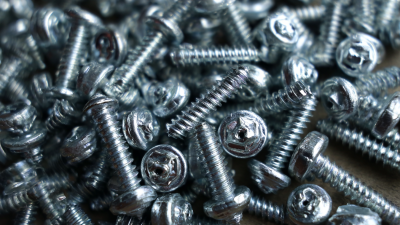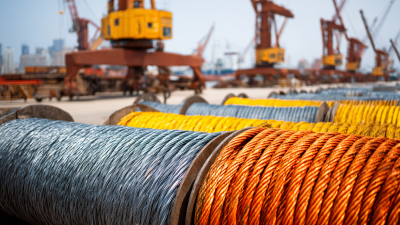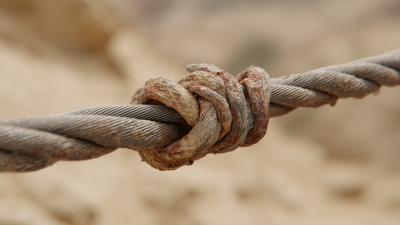When it comes to cable installation, selecting the right Cable Installation Grip Net is crucial for ensuring both efficiency and safety on the job. A well-chosen grip net not only supports the weight of your cables but also enhances the overall installation process, minimizing the risk of damage or accidents. With a plethora of options available on the market, it can be overwhelming to determine which grip net meets your specific needs. This guide aims to simplify your decision-making process by presenting 12 essential tips for choosing the most suitable Cable Installation Grip Net. Whether you are a seasoned professional or a newcomer to the field, these insights will help you make an informed choice that aligns with your project requirements and enhances your installation workflow.

Cable installation grip nets play a critical role in the telecommunications industry, specifically in ensuring the efficiency and reliability of network infrastructure. As the demand for high-speed internet continues to rise, the need for effective cable management solutions becomes increasingly paramount. According to a report by MarketsandMarkets, the telecommunications industry is projected to grow at a CAGR of 5.1% from 2021 to 2026, emphasizing the need for robust installation solutions that cater to this growth.
Grip nets are essential in providing the necessary support and stability during the installation process, allowing technicians to handle cables with ease. The use of high-quality grip nets can significantly reduce the time spent on installations and minimize the risk of damage to cables. A study published by the Telecommunications Industry Association (TIA) indicated that improper handling during installation can lead to up to 20% of cable failures, resulting in costly rework and downtime. By investing in the right grip net technology, companies can enhance operational efficiency and support the increasing demands placed on telecommunications infrastructure.
| Tip Number | Tip Description | Importance Level |
|---|---|---|
| 1 | Evaluate the load capacity requirements for your specific installation. | High |
| 2 | Consider the climate conditions where the net will be used. | Medium |
| 3 | Select a grip net material that offers durability and resistance to wear. | High |
| 4 | Check compatibility with existing installation tools and methods. | High |
| 5 | Review safety features and compliance with industry standards. | High |
| 6 | Assess the ease of installation and maintenance of the grip net. | Medium |
| 7 | Consider the cost-effectiveness and overall budget constraints. | Medium |
| 8 | Research manufacturer reputation and customer reviews. | High |
| 9 | Look for warranties and after-sales support options. | Medium |
| 10 | Request samples or trial installations, if possible. | Low |
| 11 | Review the specifications for compatibility with cable dimensions. | High |
| 12 | Consider future expansion needs and scalability of the net. | Medium |
 When selecting a cable installation grip net, understanding the key material considerations is vital for ensuring maximum durability. First and foremost, the material’s tensile strength must be evaluated. High-strength synthetic fibers such as nylon or polyester are ideal choices, as they offer significant resilience against heavy loads and harsh environmental conditions. The choice of material can impact the grip net’s performance, especially in high-stress applications, so opting for robust materials is essential.
When selecting a cable installation grip net, understanding the key material considerations is vital for ensuring maximum durability. First and foremost, the material’s tensile strength must be evaluated. High-strength synthetic fibers such as nylon or polyester are ideal choices, as they offer significant resilience against heavy loads and harsh environmental conditions. The choice of material can impact the grip net’s performance, especially in high-stress applications, so opting for robust materials is essential.
Furthermore, resistance to weathering and UV degradation cannot be overlooked. Grip nets that are constantly exposed to outdoor elements tend to degrade quickly if not made with UV-resistant materials. Additionally, considering the environmental conditions in which the grip net will be used is crucial. For instance, if the installation will be in a humid or salty environment, materials with inherent corrosion resistance or protective coatings should be prioritized. Ultimately, focusing on these material considerations will help ensure a longer lifespan and enhanced reliability of your grip net, supporting effective cable installations.
When selecting a cable installation grip net, analyzing load ratings is crucial to ensure reliability and safety during use. Load ratings indicate the maximum weight the grip net can safely carry without the risk of failure. It is imperative to check the specifications provided by the manufacturer to determine whether the grip net meets the demands of the specific installation project. This assessment helps prevent accidents and equipment damage, particularly in scenarios involving heavy cables or complex setups.
In addition to load ratings, understanding safety factors is equally important. A safety factor is essentially a margin of safety built into the design of a grip net, accounting for unexpected stresses or wear over time. Typically, a higher safety factor indicates a more robust and reliable grip net, capable of handling unforeseen circumstances. Evaluate the safety factor alongside the load rating to choose a grip net that not only meets current demands but also ensures durability and reliability over the course of its use. Careful consideration of these factors will enhance the overall safety of your cable installation.
When selecting a cable installation grip net, assessing weather resistance is crucial, as it directly impacts the longevity and performance of the grip net in various conditions. A robust grip net should be able to withstand the extremes of temperature, UV exposure, and moisture without losing its structural integrity. Look for materials treated with weather-resistant coatings or those specifically designed to resist deterioration from environmental elements.
Additionally, environmental compliance is increasingly important in today’s eco-conscious market. Many manufacturers now produce grip nets using sustainable materials and processes. Ensure that the options under consideration meet local and international environmental standards. This compliance not only benefits the planet but can also enhance the reputation of your project, reflecting a commitment to sustainability. By focusing on these critical factors, you can ensure that your chosen grip net not only performs effectively but also aligns with environmental responsibilities.
When evaluating grip net procurement decisions, it's crucial to balance cost-effectiveness with performance. In the European Union, procurement systems are being scrutinized for their transparency and efficiency, with research highlighting that clear national threshold values can improve outcomes. Organizations can benefit from evaluating both costs and the performance metrics of various grip nets to ensure they make informed decisions. According to industry reports, the initial investment in high-quality grip nets may appear higher, but they often lead to lower long-term costs due to durability and effectiveness.

To ensure a successful purchase, consider these essential tips: first, assess material quality and rating standards, as they significantly influence performance. Second, compare the lifecycle cost of different grip nets, taking into account maintenance and replacement frequency. Implementing a thorough analysis based on the functional requirements of your installation can drastically reduce unnecessary expenditures while maximizing performance. Prioritize vendors who provide transparency regarding their pricing and product testing data, as this alignment of interests can contribute to a better procurement decision.






